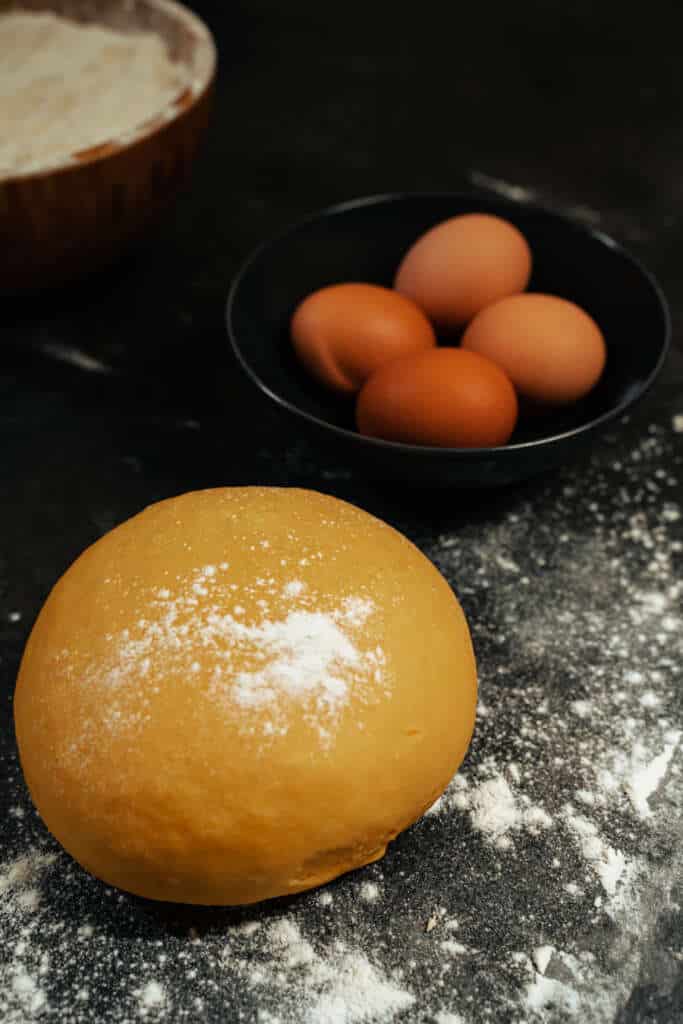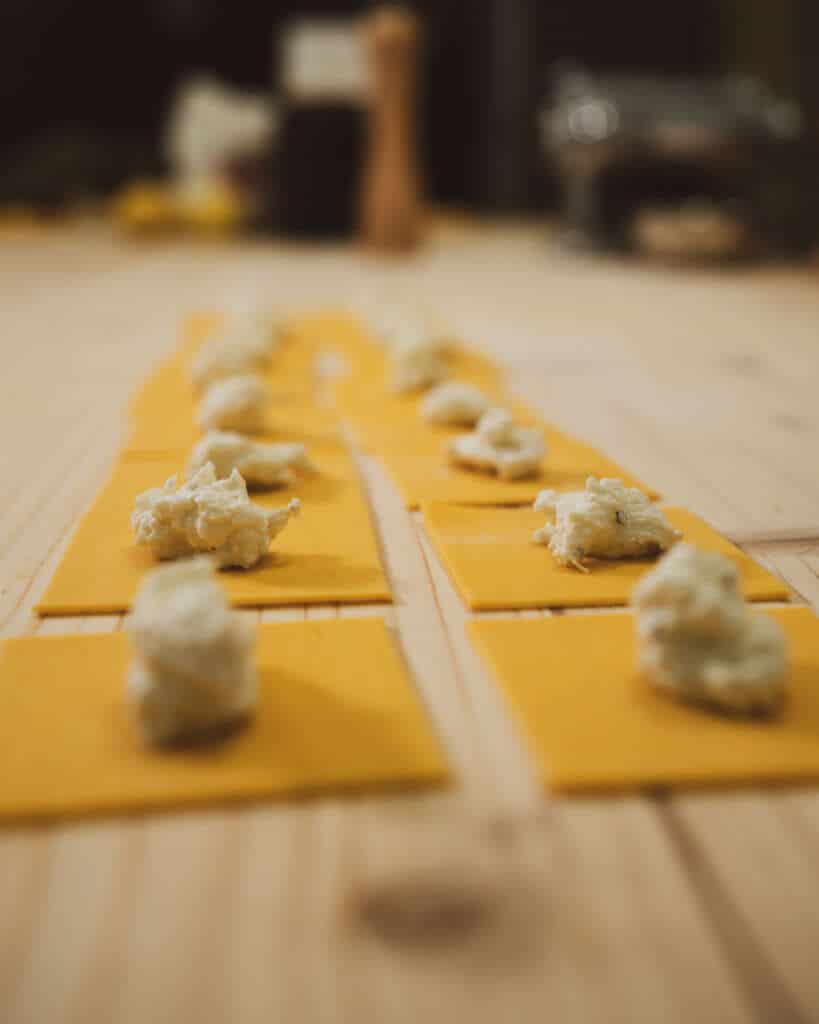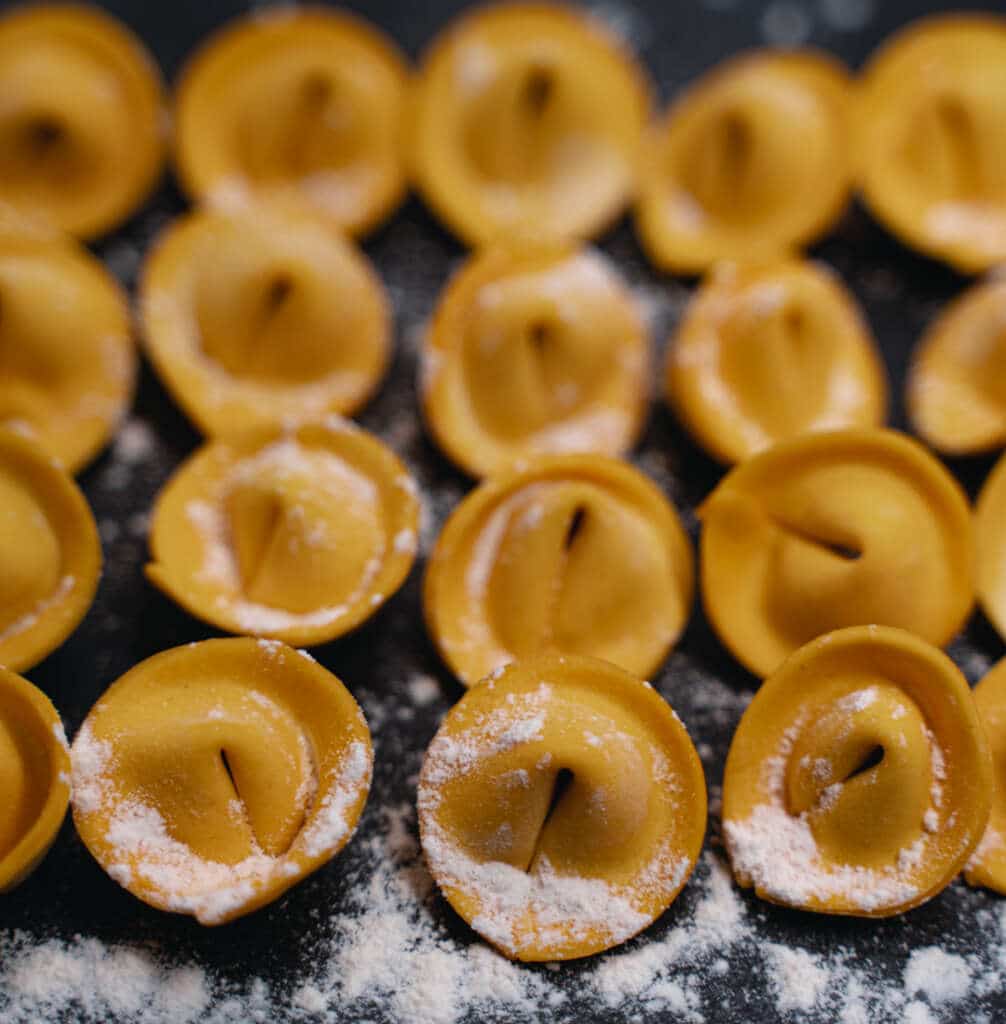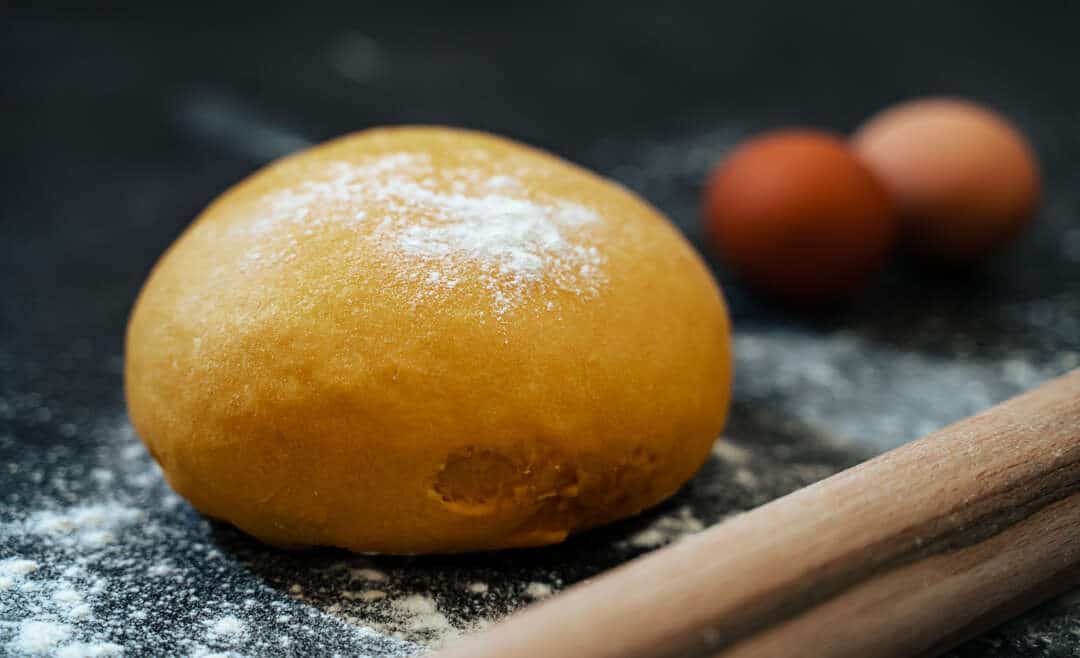Italian cuisine is renowned for its diverse and delicious pasta dishes, and ravioli are a beloved staple found throughout the country.
Italian ravioli, with their diverse fillings and regional variations, showcase the depth and breadth of Italy’s culinary traditions. Whether you prefer them stuffed with meat, cheese, vegetables, or seafood, ravioli offer a delightful taste of Italy‘s rich and flavorful pasta culture.
Let’s discover how many types of ravioli you can find in Italy.
In the beginning, there were “torteleti de enula,” the ancestors of ravioli and tortelli, and the earliest documented form of stuffed pasta.
However, over time, starting from the Middle Ages, every Italian region has developed its own traditions and typical preparations with different dough and fillings depending on the area.
In addition to the iconic square shape with scalloped edges, filled with ricotta and herbs or meat, there are many variations of ravioli from North to South Italy.
Here are the recipes of every Italian Region.
Agnolotti (both classic and “del plin”) from Piedmont
Piedmontese agnolotti are a delicious and irresistible pasta which comes with different types of stuffing even in the same Region: in the Novara area, they use borage; in Alessandria, they are seasoned with Barbera wine; in Marengo, they are filled with brains and sweetbreads, while in Monferrato, they use donkey meat.
Don’t miss the “agnolotti del plin” (typical from Turin): egg pasta tortelli filled with veal and pork, characterized by a particular closure (they call them “plin” because it is the pinch used to seal the square pasta).
They are usually dressed with butter, sage, and Parmesan, or with roast gravy, Parmesan, and truffle, or other white sauces that enhance the flavor of the product.



Pansotti from Liguria
Pansotti are called this way because the name is associated with the plump and swollen shape of the pasta, made with water, flour, and white wine and filled with “preboggion” (a typical mixture of wild herbs), ricotta, and Parmesan.It was officially presented for the first time at a gastronomic festival in Nervi in 1961. The origins of pansotti are much older, closely related to the tradition of the feast of San Giuseppe, during the Lenten fast when the Ligurians celebrated the table with a lean ravioli. The typical dressing is with walnuts and pine nuts, a tradition that began in the 1800s.
Casonsei from Lombardy
Also known as casunziei or casonzieri, casonsei are ravioli made with flour, eggs, and salt, filled with meats flavored with nutmeg in Brescia or potatoes, garlic salami, sausage, spinach, and cheese in Val Camonica. They are served with butter and cheese and are typical of the Bergamo valleys and the province of Brescia.
Casunziei from Veneto
Egg pasta ravioli in the shape of a half-moon, filled with beets, and usually seasoned with a little butter. These are casunziei (or casumzei), typical of the province of Belluno, especially Cortina d’Ampezzo and the municipalities of the Val del Boite and Agordino community. This pasta was born as a “poor” dish, a peasant dish based on the fruits the land had to offer.
Schlutzkrapfen from South Tyrol
Also known as Atesini ravioli or roffioi, these half-moon-shaped ravioli are made from rye, wheat, eggs, oil, and water and are one of the symbols of South Tyrolean cuisine.
As you can see the name has the influence of German language, which is the primary language of the area.
The filling can include spinach, ricotta, and potatoes in winter, or poppy seeds and chives in spring. The recipe is inspired by Trentino calissons, almond paste sweets covered in wafers and with various shapes (often heart-shaped to give to a loved one), but also pasticcetti, ravioli baked and served in broth.
Cjalsons from Friuli Venezia Giulia
One of the oldest preparations in regional cuisine, characterized by thin pasta made from flour, potatoes, and eggs, rolled out very thinly, so much so that women in the Val Degano used to say that the thinner the dough, the taller the hemp would grow the following year.
They are usually consumed during Christmas Eve, with melted butter, smoked ricotta, and aged cheese, although in some areas (like the Canale d’Incarojo) they are served on the last Thursday of January.
There are many variations of fillings: ricotta and herbs in the province of Udine, roasted onions, polenta, and raisins in Val Degano, herbs, smoked ricotta, dried figs, and raisins in Val Calda, rye hard bread and apples in Val del But, just to name a few.
Tortelloni from Emilia Romagna
Stuffed pasta that includes different fillings depending on the area. The name comes from the Latin “turta,” indicating a filled preparation.
Initially, “turta” was a kind of rustic pie consisting of two layers of pasta and filled with vegetables.
Among the various possible pasta closures, the one that stands out is the piacentina “cu la cua,” with two tails, the classic candy-shaped closure.
Tortelli di patate from Tuscany
Mainly found in Prato and Mugello, north of Florence, tortelli originated at least two centuries ago due to the large local production of potatoes.
In the past, they were prepared in spring, during the potato harvest season. In Borgo San Lorenzo (Florence), they are the traditional dish for the local patron saint’s festival but are also widely consumed in the Valle del Sieve, where they are served with “nana” sauce, which is duck.
Calcioni from Marche
Famous for their sweet version with ricotta, sugar, and liquor, calcioni also exist in a savory variant, filled with sheep’s ricotta, cheeses, and marjoram. Typical of the Treia area, where they are celebrated in a dedicated festival, they are also known as “carciù” and are typically dressed with tomato sauce.
Cappellacci dei briganti from Lazio and Molise
The recipe for cappellacci dei briganti belongs to both Formello, in the province of Rome, and the lower Molise. The name is inspired by the typical hats of the brigands, conical with the brim turned upwards. The origins of the pasta are unknown, but what is certain is that the Formello variant is different from all the others: it is a kind of crepe made from durum wheat flour, eggs, water, and salt, filled with sauce, usually lamb.
Sweet Ricotta Ravioli from Abruzzo and Basilicata
In the end, the sweet version: the dough is the classic egg-based one, rolled thin, filled, and then sealed.
Which one would you like to prepare? Let’s make them together!

